
Come is the fifteenth studio album by American recording artist Prince. It was released on August 16, 1994, by Warner Bros. Records. At the time of its release, Prince was in a public dispute with Warner Bros. A lack of promotion from the label and Prince himself resulted in Come under-performing on American record charts, stalling at No. 15, and becoming his first album since Controversy (1981) to not yield any top 10 singles in the US. However, it was more successful overseas, reaching the top 10 across Europe and topping the UK Albums Chart.

"Atomic" is a song by American rock band Blondie from their fourth studio album, Eat to the Beat (1979). Written by Debbie Harry and Jimmy Destri and produced by Mike Chapman, the song was released in February 1980 as the album's third single.

"Rapture" is a song by American rock band Blondie from their fifth studio album Autoamerican (1980). Written by band members Debbie Harry and Chris Stein, and produced by Mike Chapman, the song was released as the second and final single from Autoamerican on January 12, 1981, by Chrysalis Records. Musically, "Rapture" is a combination of new wave, disco and hip hop with a rap section forming an extended coda.

"Thieves in the Temple" is a song by American musician Prince from the 1990 soundtrack album Graffiti Bridge. Added at the last minute, it was the final song recorded for the album. "Thieves in the Temple" topped the US R&B chart and became a number six hit in the US, and a number seven hit in the UK. The single also peaked at number nine on the dance chart.

"New Power Generation", or "N.P.G.", is a song by American musician Prince from the 1990 album and film Graffiti Bridge. It is an anthem for his backing band, The New Power Generation, who were officially co-credited on his album covers for a time, and continued to back him up until 2013, albeit with a changing lineup. The song saw minimal chart attention, and was not as successful as its predecessor, "Thieves in the Temple".

"Sexy MF" is a song by American musician Prince and the New Power Generation, released as a single from their 1992 album Love Symbol. The music and most of the lyrics were composed by Prince, while Levi Seacer Jr. came up with the chorus and the song's title. Tony M. also delivers a rap, which he wrote. The song and its refrain "You sexy motherfucker" caused some controversy, and edited versions were produced for radio, the music video and the US version of the album. The song was recorded in Paisley Park's Studio A in December 1991.
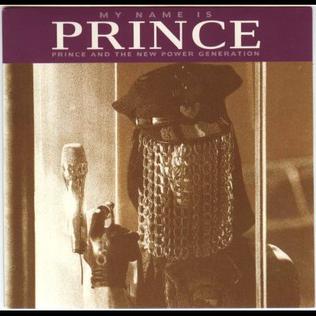
"My Name Is Prince" is a song by American musician Prince and the New Power Generation, released as the second single from the 1992 Love Symbol album. The song is about Prince himself and his musical prowess. The rap sequence is performed by NPG member Tony M. The intro to the song features vocal samples from Prince's earlier songs "I Wanna Be Your Lover", "Partyup", and "Controversy".

"7" is a song by American musician Prince and the New Power Generation, from their 1992 Love Symbol Album. It was released in late 1992 as the third single from the album, and became the most successful in the United States. It features a sample of the 1967 Lowell Fulsom song "Tramp" and is composed of heavy drums and bass in an acoustic style. It has a distinct Middle Eastern style of music, and a Hindu reincarnation theme, and an opera-like chorus which features Prince's multi-tracked vocals. The lyrics have religious and apocalyptic themes. The song is ambiguous and can be interpreted in many ways, as the "7" mentioned in the chorus could be the song referring to the Seven Deadly Sins or the seven Archon of Gnosticism or the seven names of God in the Old Testament. The song received positive reviews and peaked within the top forty of many of its major markets.

"The Morning Papers" is a song by American musician Prince and the New Power Generation from their 1992 album Love Symbol. It was released as the fourth worldwide single from the album in March 1993; the B-side is "Live 4 Love", a track from Prince's previous album, Diamonds and Pearls. The UK CD single included "Love 2 the 9's" as well, also from Love Symbol.
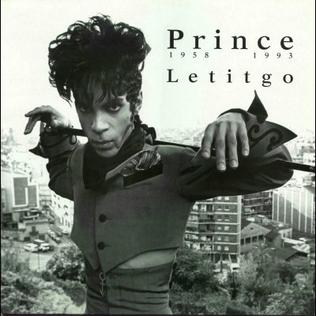
"Letitgo" is a song by American musician Prince from his fifteenth studio album, Come (1994). Despite statements that the album consisted entirely of "old" material, "Letitgo" was actually newly composed for the album. The mid-tempo song relies heavily on a drum machine pattern and bass guitar with synthesizers in the refrain. A keyboard and percussion solo appear toward the end. The song is sung in falsetto in unison with another track layered in his regular, lower register. Kathleen Bradford provides backing vocals, while Eric Leeds provides flute accompaniment.

"The Most Beautiful Girl in the World" is a song by American musician Prince, released in various forms on the 1994 remixes EP The Beautiful Experience and later on his seventeenth album, The Gold Experience (1995). In his singles chronology, it was his third major release since changing his stage name to an unpronounceable "Love Symbol". In his albums chronology, it along with the EP was his second release after changing his name.

"I Hate U" is a song by American musician Prince, released on September 12, 1995, as the lead single from his seventeenth studio album, The Gold Experience (1995).
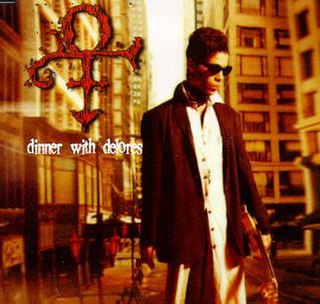
"Dinner with Delores" is a song by American musician Prince, released as the only single from his 19th studio album, Chaos and Disorder (1996). Although the single was not released in the United States, the promotional video was shown on music video channels there.

"The Greatest Romance Ever Sold" is a song recorded by American musician Prince, under his unpronounceable stage name called the "Love Symbol". It was released as the only single from his twenty-third studio album Rave Un2 the Joy Fantastic (1999). It was issued on October 5, 1999, in several different formats, including a 12-inch single, CD single, and a maxi single. Prince solely wrote and produced it, while Mike Scott provided guitar strings for the track. Several music critics found the single reminiscent to the works on his previous studio album, Diamonds and Pearls (1991).

"GoldenEye" is a song written by Irish musicians Bono and the Edge and performed by American singer Tina Turner. The song served as the theme for the James Bond film GoldenEye. Released as a single on November 6, 1995, the track was a chart hit in Europe, topping the Hungarian Singles Chart and reaching the top five in Austria, Finland, France, Italy and Switzerland, as well as number 10 on the UK Singles Chart. It was less successful outside Europe, reaching number 43 in Canada, number 63 in Australia, and number two on the US Billboard Bubbling Under Hot 100.

"HIStory" is a 1995 song by American singer-songwriter Michael Jackson. It was composed by Jackson, James Harris III and Terry Lewis, and was included on his album HIStory: Past, Present and Future, Book I. Although the original version of "HIStory" was not released as a single, it was later remixed in 1997 as part of Jackson's remix album project Blood on the Dance Floor: HIStory in the Mix. These remixes would be released as part of "HIStory/Ghosts", a double A-side single with the newly recorded song "Ghosts" as the second single from that album.

"Ordinary World" is a song by English rock band Duran Duran, released in December 1992 as the first single from their self-titled album (1993), commonly known as the Wedding Album. The ballad reached No. 1 on the US Billboard Top 40/Mainstream chart, the Canadian RPM 100 Hit Tracks chart, and the Italian Singles Chart. It also peaked at No. 3 on the Billboard Hot 100, No. 2 in Iceland and Sweden, and No. 6 on the UK Singles Chart.
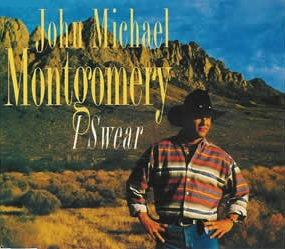
"I Swear" is a song written by Gary Baker and Frank J. Myers that became a hit for American country music artist John Michael Montgomery in 1993, and for American R&B group All-4-One in 1994.

"Move Your Ass!" is a song by German band Scooter, released in January 1995 as the second single from their first studio album, ...and the Beat Goes On! (1995). In October of the same year, a Move Your Ass EP was marketed in the United Kingdom and Ireland. This rave song was a hit in countries such as Austria, the Netherlands, Germany, Norway, Sweden and Switzerland where it reached the top ten. In France, the song reached number 11.
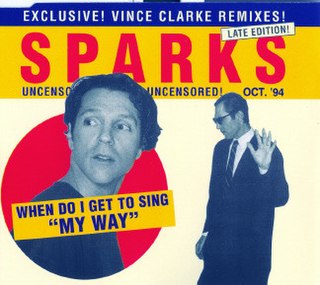
"When Do I Get to Sing 'My Way'" is a song by American rock band Sparks, released in October 1994 by Logic Records as the first single from their 16th album, Gratuitous Sax & Senseless Violins (1994). It makes reference to the Frank Sinatra signature-tune "My Way" and was a top-40 hit in the United Kingdom, while peaking at number seven in Germany. In the US, it reached number nine on the Billboard Hot Dance Club Play chart. In 1995, the song was re-released, this time peaking at number 32 in the UK. Its accompanying music video was directed by Sophie Muller.




















